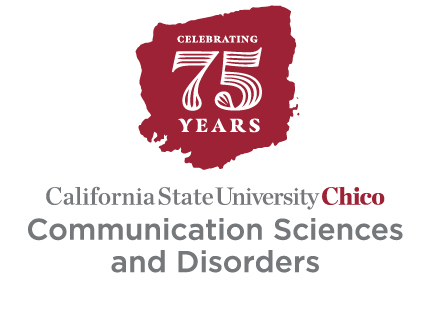Graduate Program Mission, Vision, Goals
Vision
The CMSD program is envisioned to be a model training program for developing the highest quality professionals, and to be a model clinical facility, recognized throughout the California North state for high-quality speech-language and hearing services.
Mission
The mission of the Communication Sciences and Disorders (CMSD) graduate program is to provide students with the knowledge and skills needed to enter the professions of speech-language pathology and audiology through an enriched, flexible, and innovative learning environment, both academically and clinically, that fosters quality of thought and creative, research-based problem-solving, life-long learning and consummate professionalism. To meet these ends, the program aims to employ expert, student-oriented faculty and staff. We are dedicated to program growth and to the procurement of the necessary supportive resources. We continue to enhance associations with the university and local communities to provide greater interdisciplinary and collaborative research and clinical opportunities for our students, clients, and faculty. The CMSD program is committed to being a model clinical facility, recognized throughout the California North state for both the advancement of student learning and for high quality, state-of-the-art services, outreach, and resources to the community.
Program Objectives
- Promote and maintain a student learning environment that fosters intellectual curiosity, creative problem-solving, and use of research and technology in teaching and learning through an innovative, flexible curriculum with service learning and community service opportunities.
- Promote the Teacher-Scholar model that encourages faculty to infuse experiential learning, evidence-based practice and peer-reviewed research into the learning process; and to disseminate basic and applied research into the community via publications, presentations, and tutorials.
- Employ a sufficient number of expert faculty and staff in order to meet mission goals.
- Promote scholarly growth and achievement by supporting professional education and research opportunities for faculty and local SLP professionals
- Prepare graduate students for professional licensure, certification, and credentialing, employment in any setting, and when appropriate, doctoral level training.
- Promote the highest standards for academics and clinical training in order to meet standards for CFCC and maintain national accreditation through CAA- ASHA, regional accreditation through (WASC, NCATE), and state accreditation through CCTC.
- Through the Center for Communication Disorders, provide quality service to the North state-at large, university, and K-12 communities, through the use of technology, research, and excellence in clinical teaching, including currency in clinical knowledge and interdisciplinary approaches, through continued training of faculty and supervisors.
- Accommodate a growing program by improving, strategically managing, and systematically evaluating adequacy of resources for students, faculty, staff, and facilities.
Student Learning Objectives
- Demonstrate knowledge of basic human communication and swallowing processes, including their biological, neurological, acoustic, psychological, developmental, and linguistic and cultural bases.
- Demonstrate knowledge of the nature of speech, language, hearing, and communication disorders and differences and swallowing disorders, including their etiologies, characteristics, anatomical/physiological, acoustic, psychological, developmental, and linguistic and cultural correlates.
- Demonstrate knowledge of the principles and methods of prevention, assessment, and intervention for people with communication and swallowing disorders, including consideration of anatomical/physiological, acoustic, psychological, developmental, and linguistic and cultural correlates.
- Successful completion of supervised clinical experiences, demonstrating knowledge and skill competencies.
- Demonstrate knowledge and skill in Professional Practice Competencies which includes accountability, integrity, effective communication, clinical reasoning, evidence-based practice, concern for individuals, cultural competence, professional duties, collaborative practice.


